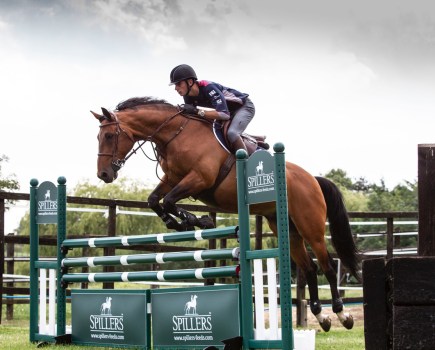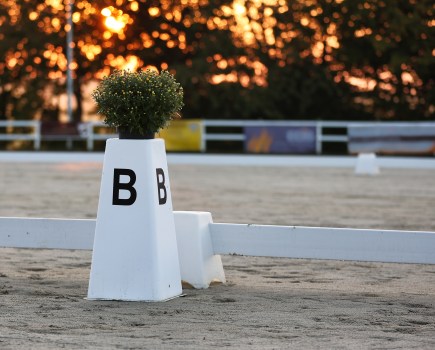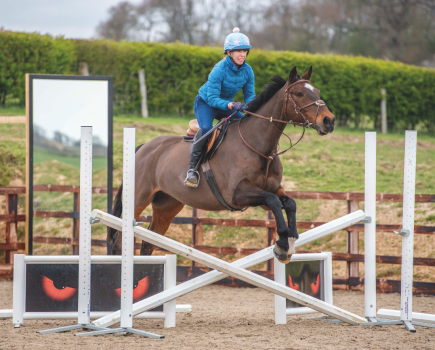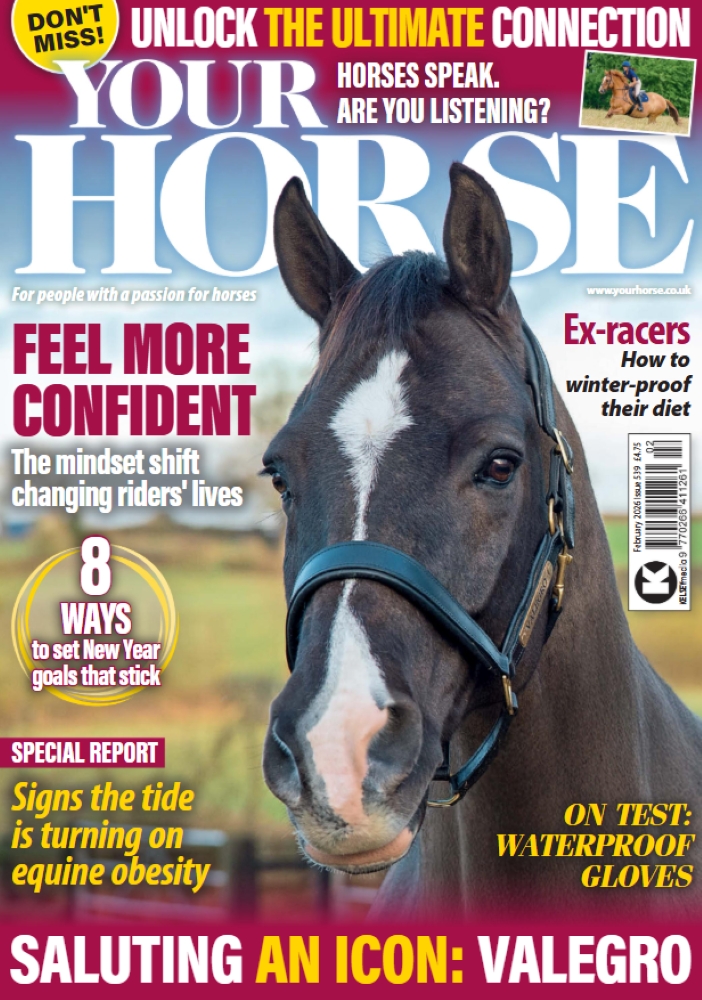Event rider Piggy French is here to explain why a secure and balanced position in the saddle is so important and how it can help to boost your confidence.
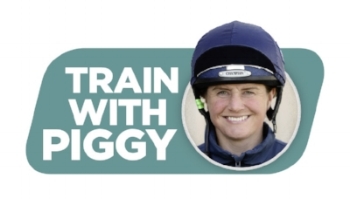
Riding in a good, balanced position is good for you and allows your horse to move correctly and freely.
It’ll also work wonders for your confidence too – when you feel secure, you can ride with more assurance.
Just getting into the routine of assessing your position each time you ride, or asking a friend to video you are both great ways to ensure you’re riding as well as you possibly can.
How you sit in the saddle has a huge influence on your horse. The more balance you are in the saddle, the better your horse will move.
What a correct riding position should look like
- There should be a vertical line through your ear, shoulder, hip and heel
- Your eyes need to be looking up and ahead
- Have your elbows soft, with a slight bend
- Maintain a straight line from your elbow, down your arm, along the rein to the bit
- Keep your thumbs on top, pointing towards your horse’s ears
- Sit equally across both seat bones
- Relax through your seat, pelvis and hips
- Your knee and thigh should rest lightly against your saddle
Secure your lower leg
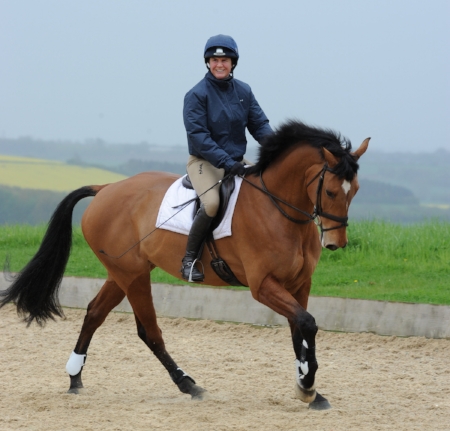
Your lower leg position is essential for secure riding. Try this exercise to improve your leg position.
- In trot or canter, stand up in your stirrups for a few strides, then sit again
- Repeat the above exercise, standing up every two strides
- Feel your weight sinking into your ankles as you stand up in the stirrups
- Check you’re not using the reins to keep your balance
- You can test your balance by pushing your reins forwards and seeing what happens to your position
- As you alternate between sitting and standing, your horse should stay in the same rhythm and outline
- Keep your breathing even and make sure to look up and ahead
Improve your jumping position
A good jumping position is essential. It gives your horse the freedom to bascule over the jump and tuck his front and hindlegs up, reducing the chance of him knocking a pole.
It also keeps you over your horse’s centre of gravity helping you stay secure and less likely to fall off.
The five stages of your jumping position
- Preparation
This starts as you’re turning to approach the jump. As you turn the corner towards the fence, stay in your canter position and keep your shoulders level.
- Approach
Stay relaxed in your knees to absorb your horse’s movement. Keep your shoulders up – if you tip forward you’ll put weight onto your horse’s shoulders, which will make it difficult to jump clearly.
- Take-off
On take-off, keep a bit of distance between you and your horse’s neck. Allow your horse’s wither to come to meet your chest rather than dropping your upper body too far forward.
- In the air
From your hips, allow your upper body to go forward while still maintaining your core. Your arms follow your horse’s head and neck movement as he jumps.
- Landing
As you land, maintain your balance and don’t collapse forward. Think about keeping your head up and your leg on to support your horse.
Don’t miss the latest issue of Your Horse Magazine, jam-packed with training and veterinary advice, horse-care tips and the latest equestrian products available on shop shelves, on sale now




